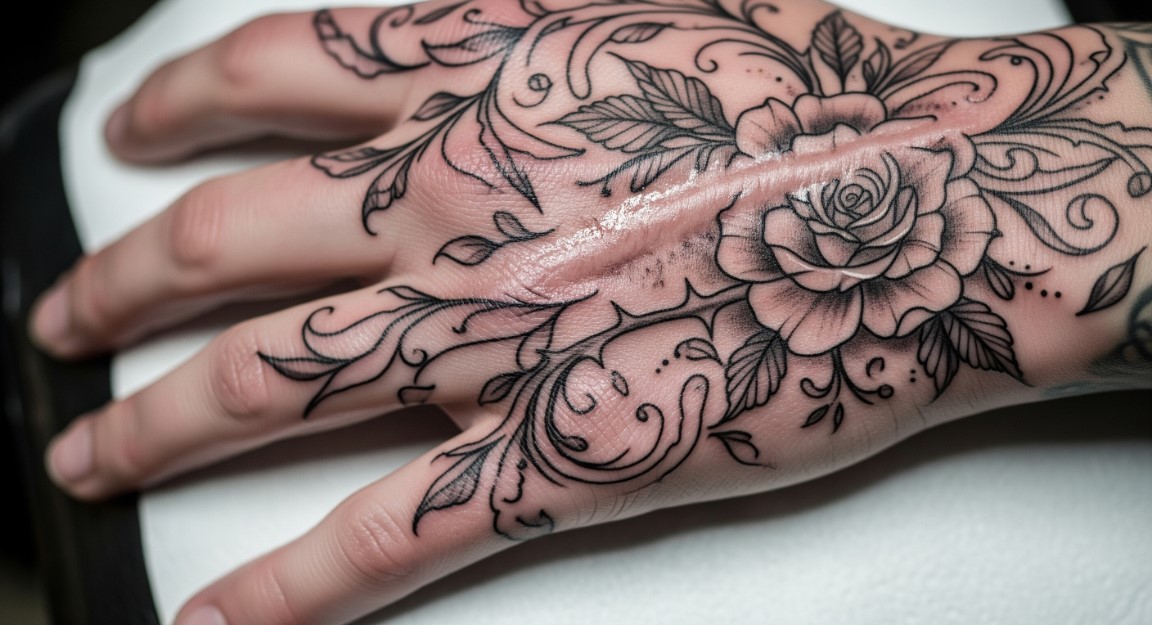There are stories behind scars- some of them proudly showcased, and some that are kept secret. To them, they remind everlasting trauma, disease, operations, or unpleasant episodes in life. Yet the last few years have seen people discovering one way to take back their bodies and recreate those stories: scar cover-up tattoos. Aesthetic solutions are far removed; these tattoos may be the armor of emotional protection, the message of visual transformation, and the means of greater healing.
So, what do scar cover-up tattoos work, why is it important, and how can it help empower the body and the mind?
Understanding the Psychology Behind Scar Tattoos
To most people, scars are not only on the surface. They could be emotional, and they are often heavy for people who are unable to get out of self-harm, cancer, burns, or major surgeries. That reminder may influence self-esteem and mental health every single day.
The cover-up is an act of reclamation, tattooing scars on top of each other. It makes a reflective reminder of pain into proactive statement of power. The transformation has been proven to increase confidence, enhance body neutrality or positivity and re-enforce the belief that healing can occur and it is beautiful.
When Art Meets Healing: How Tattoos Reframe the Narrative
The cover of a good cover-up is not merely to keep something covered but so as to provide new meaning to what is covered. You can transform floral patterns, mandalas, any animals, cosmic symbols, or even abstract line drawings to fit the specific form of the scar, its texture. Artists usually get intimated with clients and get involved in a discussion about personal themes, symbolism the client desires, and their level of comfort.
The transitioning of perception is what makes this meaningful: a transformation of damage to design, what was a wound to canvas. To the person who has been at the mercy of what their body has gone through, a scar tattoo can be a visual reminder of how they survived.
The Importance of Trauma-Informed Tattoo Artists
Scar cover-ups require an artist who is emotionally and technically prepared to do them. Therefore, clients must have a chance to meet trauma-informed professionals who would know not only the technicalities of scarred skin but would proceed with each session sensitively and reverently.
Such artists usually:
- Offer quality consultations
- Teach on realism Expectations
- Be calm and judgment-free.
- Observe the speed and the emotional preparedness of the client.
The tattoo Helensvale studios and others are dedicated to inclusivity, privacy, and client consent have special empowerment for patients who will be entering with vulnerable pasts.
Technical Considerations: Tattooing Over Scarred Skin
Scarred skin is erratic. It can take ink a bit different, be more tactile, or be texturally irregular. A tattoo artist possesses special methods and adapted equipment (depth of needles, velocity of stroke, enrichment of the ink) to formulate clean pictures without damaging the skin prematurely.
Not every scar is tattoo-ready. The best applicants would be:
- Completely cured (normally 1218 years of age)
- Not overgrown, nor formed in active keloidal growth
- Sanctioned by a physician in case of post-surgery
An experienced artist will not only evaluate the condition of the scar and develop a decent design that is not direction against the body lines, but will also fall in line with it.
Painting what was initially experienced as a scar into a willed beauty, a person takes back what is theirs, their bodies, their narrative.

Marco Ventura is a globally award‑winning tattoo artist based in Australia, renowned for his expertise across diverse tattoo styles. As the founder of his own studio, he leads a talented team dedicated to turning personal stories into striking body art. Passionate and visionary, Marco helps clients worldwide bring their tattoo dreams to life. He also shares his thoughts about tattoos and how things can be better for the clients through engaging blog posts.




